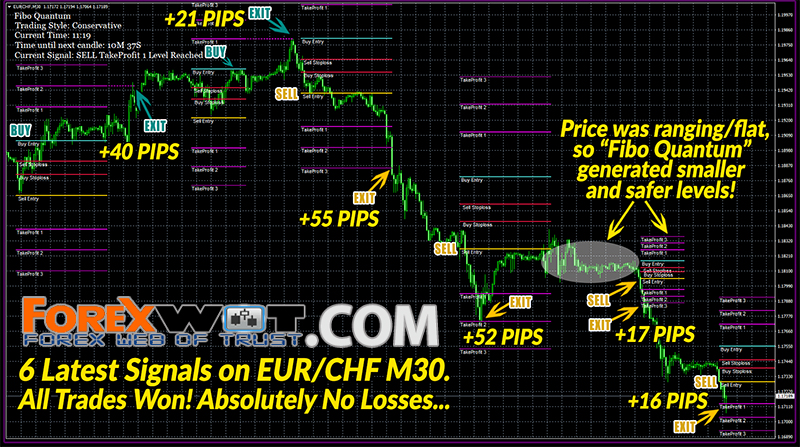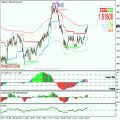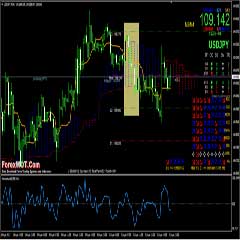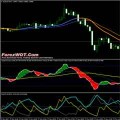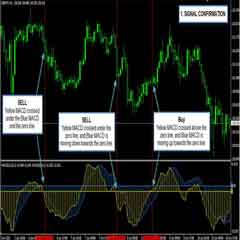Very Profitable London & New York Session Trading Strategy. ForexWOT.Com-LondonNewYorkTrading is a trend following trading system based on Mama, WATR , Fractals, MACD, and Awesome Oscillator.

Unlike any other charted market, the forex market is open for currency pairs’ dancing 24 hours a day from 6 PM on Sunday in New York, to 4 PM on Friday.
Dividing every trading day into 4 major sessions, each day starts at Sydney market open which is 5 PM to 2 AM Eastern Standard Time, moves into the Asian session with Tokyo’s market open at 7 PM to 4 AM, and just when the Asian market participants are about to close shop, their European counterparts are just beginning their day with London session from 3 AM to noon.
The final session starts in New York from 8 AM to just before 5 PM when the New York Stock Exchange closes. That makes one week of forex trading sessions.
London – New York Overlap
This is when the real shebang begins! You can literally hear traders crack their knuckles during this time, because they know they have their work cut out for them. This is the busiest time of day, as traders from the two largest financial centers (London and New York) begin duking it out.
It is during this period where we can see some big moves, especially when news reports from the U.S. and Canada are released. The markets can also be hit by “late” news coming out of Europe.
If any trends were established during the European session, we could see the trend continue, as U.S. traders decide to jump in and establish their positions after reading up what happened earlier in the day. You should watch out though, at the end of this session, as some European traders may be closing their positions, which could lead to some choppy moves right before lunch time in the U.S.
London & New York Session Trading Rules
Not everyone is a full-time day trader, and therefore can’t choose when they trade. If you can’t trade during the ideal window of 1300 to 1600 GMT, then day trade the EUR/USD at some other point between 0700 and 2000 GMT. Trading during these times maximizes profit potential due to the size of the price moves, and spreads are typically at their lowest during these times as well.
Metatrader indicators:
- Momentum,
- Awesome oscillator,
- Solar Wind MACD,
- WATR (WTR K 7, WATR M 2.0, ATR 21),
- WLX fractals,
- Mama Fast limit 0.5, slow limit 0.05,
- Signal Trend.
Trades only in the direction nof the trend
BUY Rules
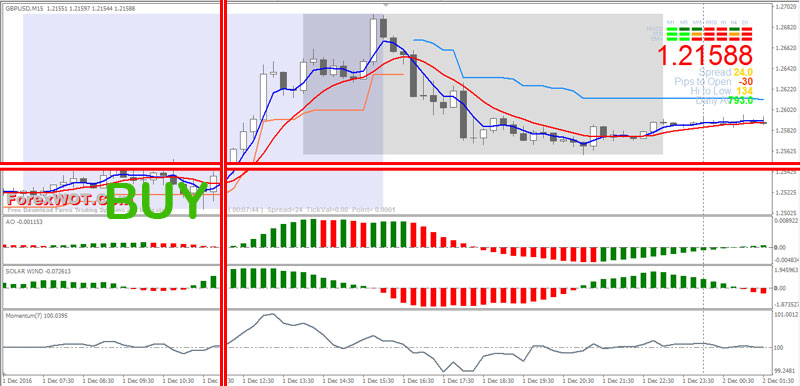
- Price above WATR buy zone,
- Mama fast above mama slow,
- Awesome green color (optional),
- Solar Wind MACD Green color,
- Momentum line above 100 level,
- Signal Trend green color.
BUY Rules
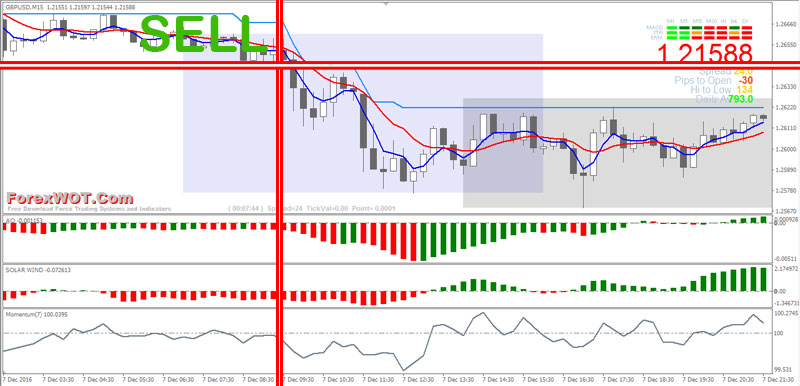
- Price below WATR sell zone,
- Mama fast below mama slow,
- Awesome red color (optional),
- Solar Wind MACD red color,
- Momentum line below 100 level,
- Signal Trend red color.
Exit at the opposite arrow and place stop loss or 5 pips (above below the previous fractal or above/Below WATR.
Manage Your Day Trading Risk
You’ve picked a market, have equipment and software setup, and know some times that are good for day trading. Before you even start thinking about trading, you need to know how to control risk.
Day traders should control risk in two ways: trade risk and daily risk.
- Trade risk is how much you are willing to risk on each trade. Ideally, risk 1% or less of your capital on each trade.
This is accomplished by picking an entry point and then setting a stop loss, which will get you out of the trade if starts going too much against you.
The risk is also affected by how big of a position you take, therefore, learn to how to calculate the proper position size for stocks, forex, or futures.
Factoring your position size, your entry price, and your stop loss price, no single trade should expose you to more than a 1% loss in capital.
- Also control your daily risk. Just as you don’t want a single trade to cause a lot of damage to your account (hence the 1% rule), you also don’t want one day to ruin your week or month.
Therefore, set a daily loss limit. One possibility is to set it at 3% of your capital. If you are risking 1% or less on each trade, you would need to lose three trades or more (with no winners) to lose 3%. With a sound strategy, that shouldn’t happen very often.
Once you hit your daily cap, stop trading for the day. Once you are consistently profitable, set your daily loss limit equal to your average winning day.
For example, if you typically make $500 on winning days, then you are allowed to lose $500 on losing days. If you lose more than that, stop trading.
The logic is that we want to keep daily losses small, so the loss can be easily recouped by a typical winning day.

